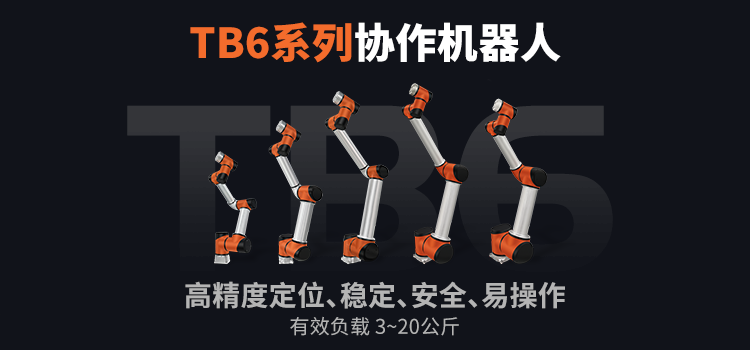Collaborative Robot Application Scenarios in 2023
Date:2023-04-04As artificial intelligence and robotic technology continue to advance, collaborative robots have become a crucial type in industrial production and manufacturing. Compared to traditional robots, collaborative robots are safer, more flexible, and easier to operate, capable of working alongside humans to enhance production efficiency and reduce human errors. Their emergence has significantly improved industrial production efficiency, and their outstanding performance and wide application scenarios have made them a hot topic in the robot market in recent years. Currently, collaborative robots are widely used in various industrial sectors, including the automotive industry, electronics industry, logistics and warehousing, healthcare, and more. In the future, collaborative robots will become an integral part of the global manufacturing industry and rapidly expand into other fields, including smart homes, the service industry, construction, agriculture, and beyond.
一、 Definition and Characteristics of Collaborative Robots
The design concept of collaborative robots mimics human collaboration, working together with humans to accomplish tasks. These robots can perceive the surrounding environment through various sensors, allowing real-time reactions based on human actions. The characteristics of collaborative robots include:
1.High Safety:
Collaborative robots exhibit higher safety performance compared to traditional robots. In the event of a collision with a human, the robot automatically stops its movement. This safety mechanism makes collaborative robots a popular choice in industrial production.
2.Flexibility:
Collaborative robots are designed to be highly flexible, capable of autonomous control for different work tasks. Due to their flexible design and operation, they can easily accomplish various tasks.
3.User-Friendly Operation:
Collaborative robots have excellent user interaction, allowing operators to control them through simple commands.

二、 Applications of Collaborative Robots
1.Automotive Manufacturing:Collaborative robots will play an increasingly crucial role in improving production lines and processes in the automotive industry. They will work alongside workers to enhance operational efficiency and product quality. In the future, collaborative robots will become more intelligent and customizable, catering to individual production needs.
2.Electronics Industry:
Widely applied in the electronics industry, collaborative robots can execute entire processes from assembly to testing, significantly increasing speed and accuracy. Their precision often exceeds manual operation, making them essential for improving efficiency and processes in electronic manufacturing.
3.Logistics and Warehousing:
Collaborative robots can efficiently pick and stack items in large logistics centers or warehouses, substantially improving efficiency and reducing logistics costs for businesses.
4.Healthcare:
Applied in healthcare, collaborative robots assist in tasks such as tool cleaning, medication dispensing, and patient transport, offering higher precision and safety. They are expected to become intelligent assistants in hospitals, optimizing healthcare services and reducing risks for patients.
5.Smart Homes:
Collaborative robots can be employed in the smart home industry to perform various household chores, enhancing the comfort of home life.
6.Service Industry:
In the future, collaborative robots will contribute to the automation of the service industry, assisting in tasks such as hotel room cleaning, food and beverage service, temperature regulation, and interactive guest services.
7.Construction Industry:
Collaborative robots have promising prospects in the construction industry, assisting human workers in tasks such as bricklaying, concrete production, and metal structure fabrication. They can also provide higher precision measurement services, reducing the impact of human factors on measurements.
8.Agriculture:
Agriculture is a crucial industry for the future application of collaborative robots. They can assist in tasks like planting, fertilizing, and pest control, improving production efficiency and quality as the global automation level in agriculture continues to rise.
三、 Future Prospects of Collaborative Robots
The advent of collaborative robots has positively driven efficiency and sustainability in industrial production, enhancing product quality and creating more comfortable, healthy, and safe environments. We look forward to a future where collaborative robots and humans collaborate to create a better world. As artificial intelligence and robotic technology continue to advance, the application scenarios of collaborative robots will expand and become more widespread.Furthermore, as society ages, collaborative robots will become a cost-effective and necessary tool to help the elderly with various tasks, thereby improving their quality of life.
In summary, collaborative robots are a highly potential and promising type of robot. We believe that, in the future, collaborative robots will undergo more innovation and technological breakthroughs, becoming a significant force driving industrial development and human well-being.
Previous Article: Compound robots: The next generation of industrial robots.
Next Article: 2023 Collaborative Robot Trends: Strong Momentum in the Chinese Market